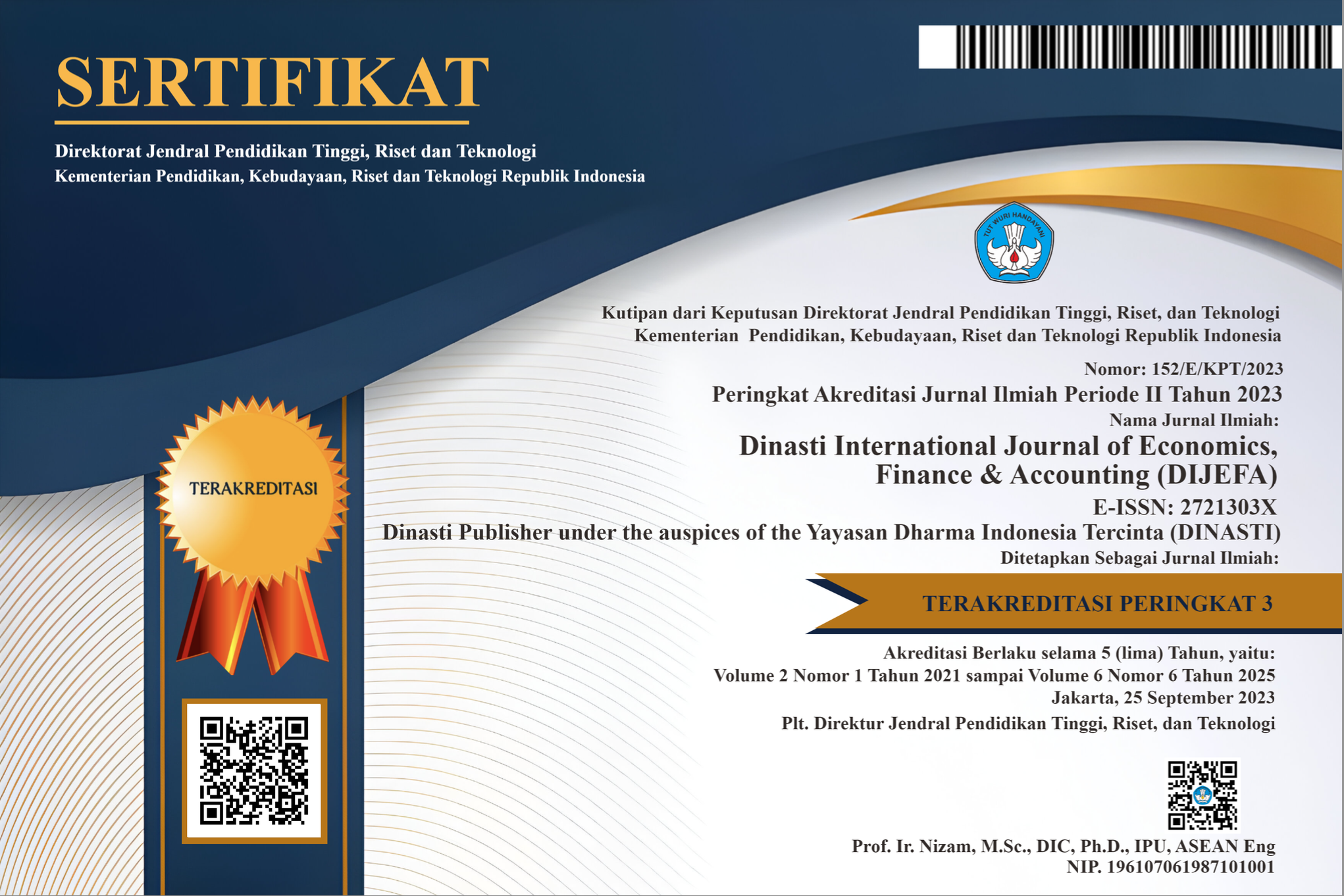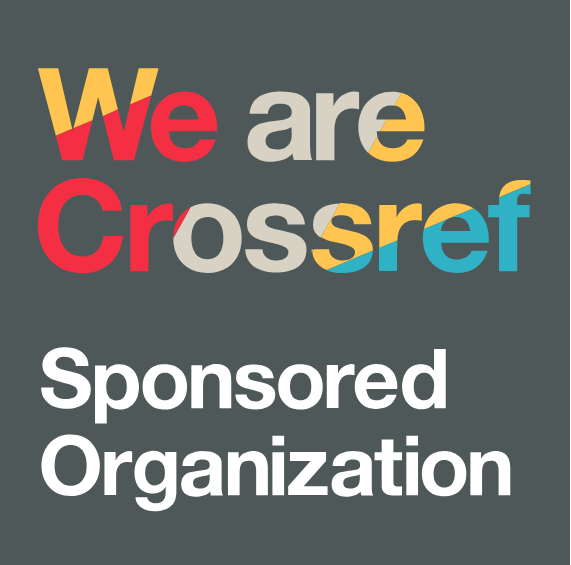Determinants of Fraudulent Financial Statements Using an Approach Fraud Hexagon
DOI:
https://doi.org/10.38035/dijefa.v4i6.2244Keywords:
Fraud, Fraud Hexagon, Fraudulent Financial StatementAbstract
There are 239 cases of fraud in Indonesia with a percentage of cases of financial statement fraud of 9.2%, so this research aims to develop methods for preventing and detecting financial statement fraud are needed. The theory used is the latest theory, namely the fraud hexagon. This research is quantitative. This research is a hypothesis testing research which aims to test hypotheses and explain phenomena in the form of relationships between variables in the research, namely the fraudulent financial statement variable as the dependent variable and the elements in the fraud hexagon, namely pressure, opportunity, rationalization, capability, arrogance and collusion as independent variables. The novelty of this research is this research added a moderating variable which is exposures. The primary data used was taken directly using a questionnaire distributed to practitioners in the finance, accounting and internal audit departments in the state-owned enterprises in services industry from Nov 3rd 2023 until Dec 2nd 2023 with 139 respondents used. This research has 7 hypotheseses with 6 of them are every elements in fraud hexagon has positive effect to fraudulent financial statements, and the 7th hypotheses is exposures moderates in weaken the influence of the variables in fraud hexagon to fraudulent financial statement. The results of this research is pressure, capability, collusion, opportunity, and arrogance has positive significant effect in fraudulent financial statement, as for rationalization has no significant effect in fraudulent financial statement. Exposures can moderate elements in fraud hexagon in weaken their influence in fraudulent financial statement.
References
Association of Certified Fraud Examiners. (2019). Survey Fraud Indonesia.
Azizah, S., & Reskino, R. (2023). Pendeteksian Fraudulent Financial Statement: Pengujian Fraud Heptagon Theory. Jurnal Akuntansi Dan Governance, 4(1), 17. https://doi.org/10.24853/jago.4.1.17-37
Handoko, B. L. (2021). FRAUD HEXAGON DALAM MENDETEKSI FINANCIAL STATEMENT FRAUD PERUSAHAAN PERBANKAN DI INDONESIA. In Jurnal Kajian Akuntansi (Vol. 5, Issue 2). http://jurnal.ugj.ac.id/index.php/jka
Lu, S., & Devries, D. (n.d.). SAS 99 and Fraud Detection. https://trace.tennessee.edu/utk_chanhonoproj
Max Ki. (2023). Laporan Keuangan?: Pengertian, Fungsi, Jenis, dan Format.
Mutia Basri, Y. (2020). Analisis Kecurangan pada Pengelolaan Dana Desa dalam Perspektif Fraud Hexagon. Studi Akuntansi Dan Keuangan Indonesia, 3(1).
Neva, S., & Amyar, F. (2021). Pengaruh Fraud Diamond dan Gonetheory Terhadap Academic Fraud. JAS-PT (Jurnal Analisis Sistem Pendidikan Tinggi Indonesia), 5(1), 41. https://doi.org/10.36339/jaspt.v5i1.408
Oktarina, D., & Ramadhan, N. S. (2023). Academic Fraud Behavior of Accounting Students in Dimensions of Fraud Hexagon Theory. Journal of Auditing, Finance, and Forensic Accounting, 11(1), 33–48. https://doi.org/10.21107/jaffa.v11i1.18432
Rizki Dewi, & Vivia Agarta. (2023). Enam Fakta Kasus Waskita Karya.
Setyono, D., Hariyanto, E., Wahyuni, S., & Pratama, B. C. (2023). Penggunaan Fraud Hexagon dalam Mendeteksi Kecurangan Laporan Keuangan. Owner, 7(2), 1036–1048. https://doi.org/10.33395/owner.v7i2.1325
SPI Undip. (2022). Mengenal Istilah Fraud.
Wolfe, D. T., & Hermanson, D. R. (2004). The Fraud Diamond: Considering the Four Elements of Fraud. https://digitalcommons.kennesaw.edu/facpubs
Downloads
Published
How to Cite
Issue
Section
License
Copyright (c) 2024 Hana Azhari, Lenggogeni Lenggogeni

This work is licensed under a Creative Commons Attribution 4.0 International License.
Authors who publish their manuscripts in this journal agree to the following conditions:
- The copyright on each article belongs to the author(s).
- The author acknowledges that the Dinasti International Journal of Economics, Finance & Accounting (DIJEFA) has the right to be the first to publish with a Creative Commons Attribution 4.0 International license (Attribution 4.0 International (CC BY 4.0).
- Authors can submit articles separately, arrange for the non-exclusive distribution of manuscripts that have been published in this journal into other versions (e.g., sent to the author's institutional repository, publication into books, etc.), by acknowledging that the manuscript has been published for the first time in the Dinasti International Journal of Economics, Finance & Accounting (DIJEFA).


























































